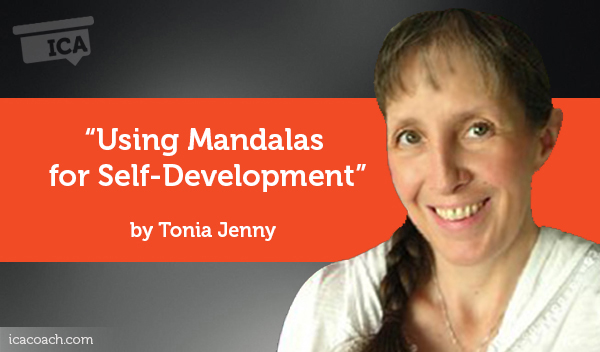
Research Paper By Tonia Jenny
(Life Coach, USA)
Because I’ve personally taken a recent interest in mandalas and had found the process of creating them not only restorative and fun, but also enlightening, I wanted to explore the viability of using mandala creation as a coaching tool. While creating mandalas, I’ve discovered when asking myself a question, that answers arising from a deep subconscious place are more easily expressed in colors and symbols than in words. A deeper level of awareness occurs as a result of two phases: First, the creation of a mandala and second, enjoying a period of reflection upon what has been drawn.
What is a Mandala?
Mandala comes from the Sanskrit language and is composed of two words: mand, “to mark off” and la, “circle or sacred center. In its most basic form, a mandala is merely a circle, but since ancient times, many cultures have filled this shape with symbols, patterns and sacred marks.
A visual mandala can be symmetrical in its design, with intricate patterns radiating out in a circular grid from a point in the center. Alternatively, an asymmetrical composition of any form—abstract or representational—can also fill a circle and be called a mandala. (Examples can be seen at the end of this paper.)
Significance of the Circle
. . . Everything an Indian does is in a circle,
and that is because the Power of the World
always works in circles,
and everything tired to be round.
. . . The sky is round,
and . . . the earth is round like a ball,
and so are all the stars.
The wind in its greatest power, whirls.
Birds make their nests in circles,
for theirs is the same religion as ours.
The sun comes forth and goes down again in a circle.
The moon does the same, and both are round.
Even the seasons form a great circle
in their changing,
and always come back again to where they were.
The life of a man is a circle from childhood to childhood,
and so it is in everything where power moves.
—Black Elk in Black Elk Speaks by John G. Neihardt
In every culture, the circle is a symbol of unity and wholeness. What is put inside of a circle is sealed off from what’s around it. This creates a safe and personal space. Carl Gustav Jung commonly associated mandalas with the Self or center of our entire personality. For a period of time, Jung created mandalas daily and credited them with personal transformation and healing. He suggested that working with mandalas supports the natural urge to reach our potential and discover our uniqueness—the growth process he referred to as individuation.
So why do we connect on such a primal level with the circle? Jungian-oriented psychotherapist and art therapist Susanne Fincher explains the circle naturally feels meaningful or sacred because it represents our true origin:
We grow from a tiny round egg, supported in the womb of our mother. In her womb we are encircled and firmly held within a spherical space.” She goes on to say, “Once born, we find ourselves on a plant that is itself circular, moving in a circular orbit around the sun. . . .The subliminal experience of circular movement, like the memory of our mother’s womb, is encoded in our bodies. Thus we are predisposed to respond to the circle.—Creating Mandalas
Circular shapes abound in nature. As Madonna Gauding puts it in her book, The Mandala Bible, “A flower, a snowflake or a cross-section of a tree—each reveals growth moving outward from a central point.” And circles are some of the first shapes we make as children—first as suns and then as the bodies of people.
Drawing and expressing within the confines of a circle feels natural and feels safe.